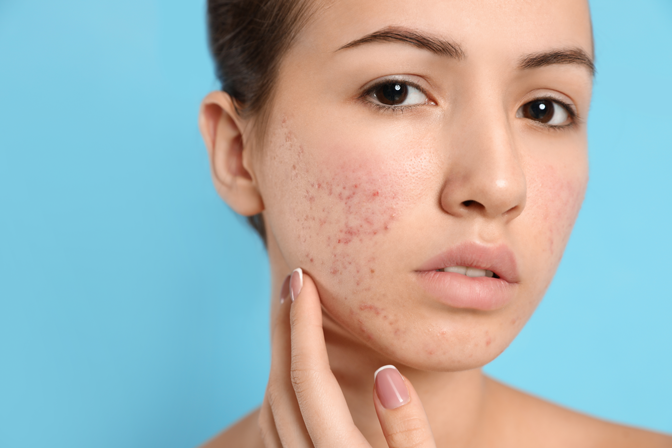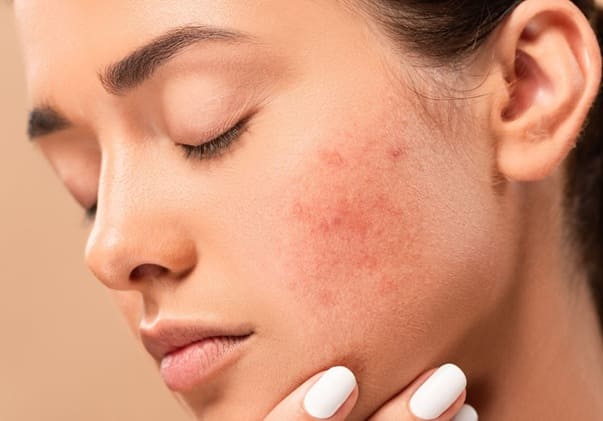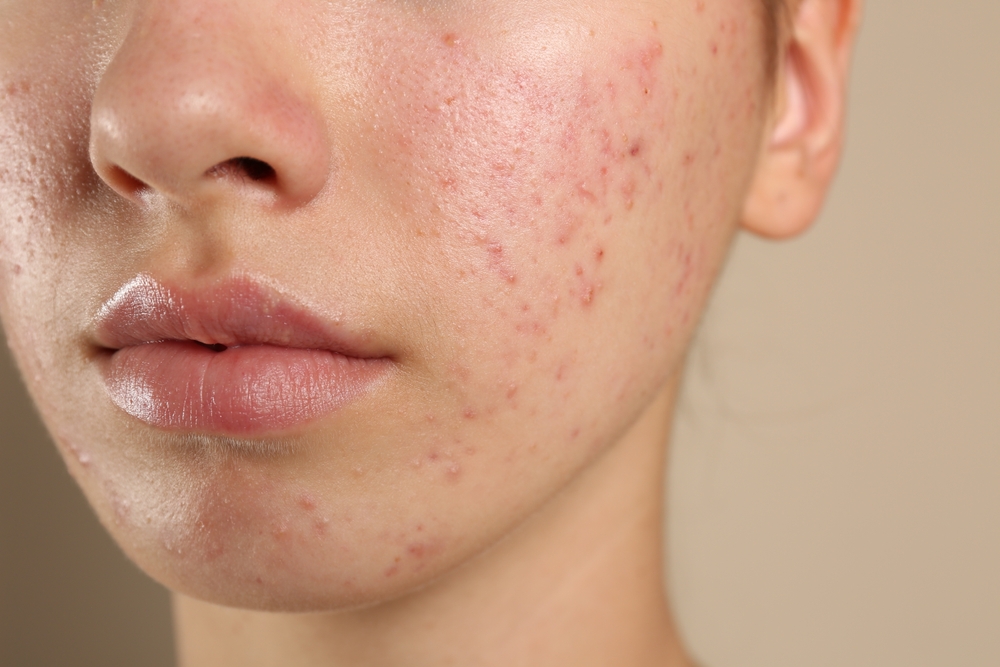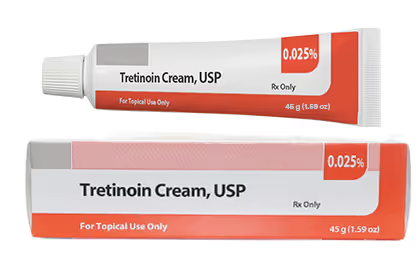Tacrolimus is a powerful medication that works by modulating the body's immune system. While it is widely known for its critical role in preventing organ transplant rejection, a topical form of tacrolimus has become an essential tool in dermatology for managing inflammatory skin conditions. Understanding how it works, its uses in skin care, and its overall profile is key for any patient considering it as part of their treatment plan. This guide provides a comprehensive look at tacrolimus from a dermatological perspective.
What is Tacrolimus?
Tacrolimus is classified as an immunosuppressive drug. Its primary function is to temper the activity of the immune system (MedlinePlus). In some medical contexts, like organ transplantation, a highly active immune system can be harmful, attacking a new organ as a foreign invader. In dermatology, an overactive immune response in the skin can lead to chronic inflammatory conditions like eczema. By selectively calming this immune activity, tacrolimus can effectively manage the symptoms of these conditions right at the source.
The medication exists in different forms. Systemic tacrolimus (taken orally as capsules or granules) is used for organ transplants. For dermatology, we primarily use topical tacrolimus (an ointment or cream), which is applied directly to the skin. This allows for targeted treatment, focusing the medication’s effects where they are needed most and minimizing its presence throughout the rest of the body.
How Does Tacrolimus Work in the Body?
The therapeutic effects of tacrolimus come from its sophisticated ability to interrupt the signals that activate certain immune cells, particularly T cells, which are key drivers of inflammation in many skin diseases. While the complete biological process is complex, understanding the basic steps can clarify why it is an effective treatment for skin conditions.
The mechanism involves several key actions, as outlined by research (PubMed):
- Inhibiting a Key Enzyme: Once inside an immune cell, tacrolimus binds to a specific protein. This new complex then blocks an enzyme called calcineurin. Calcineurin is a critical switch that, when turned on, activates T cells and ramps up inflammation. By inhibiting calcineurin, tacrolimus effectively keeps this switch in the "off" position.
- Reducing Inflammatory Signals: This blockade prevents the T cells from producing and releasing inflammatory chemicals called cytokines, such as interleukin-2. These cytokines are like messengers that call more immune cells to the area, creating a cycle of inflammation, redness, and itching. By halting their production, tacrolimus breaks this cycle.
- Targeting the Immune Response: Research indicates that tacrolimus preferentially suppresses certain types of T helper cells (Th1 cells) over others. This selective action helps to rebalance the immune response in the skin without shutting it down completely.
This intricate mechanism of action makes tacrolimus a potent tool against immune-mediated skin disorders. At Honeydew, our providers' deep understanding of these pathways allows us to determine when a treatment like tacrolimus is the most appropriate and effective choice for a patient's specific condition.
Dermatological Uses of Tacrolimus
In dermatology, the primary use for tacrolimus is as a topical, non-steroidal treatment for atopic dermatitis, more commonly known as eczema. For many patients, it represents a valuable alternative or complement to topical corticosteroids.
When applied to the skin, tacrolimus ointment works directly on the immune cells in the affected area. It reduces the local inflammation that causes the characteristic symptoms of eczema: redness, intense itching, and weeping rashes. Because it is not a steroid, it can be used on sensitive areas of skin, such as the face, eyelids, and skin folds, where long-term use of potent steroids might be a concern.
At Honeydew, we utilize tacrolimus in specific formulations to manage these inflammatory skin conditions, leveraging its immune-modulating properties to provide targeted relief. It is particularly useful for patients who need long-term management of chronic eczema or for those who have not responded well to other treatments. The goal is to control flare-ups, reduce the severity of symptoms, and extend the time between flares, ultimately improving the patient's quality of life.
Other Medical Uses of Tacrolimus
To fully appreciate tacrolimus, it is helpful to understand its systemic use in other areas of medicine, which is where it was first established as a powerful medication. Its primary and most critical role is in preventing organ transplant rejection.
Organ Transplant Rejection Prevention
The hallmark use of tacrolimus is in transplantation medicine, where it is given orally to prevent the recipient's immune system from attacking and rejecting a newly transplanted organ. According to MedlinePlus, it is a cornerstone therapy for recipients of kidney, liver, lung, and heart transplants. Extensive clinical research has confirmed that tacrolimus-based immunosuppression is a key factor in the long-term success of these life-saving procedures (PubMed).
Studies have shown that tacrolimus is at least as effective, and in some cases more effective, than older immunosuppressants like cyclosporin. For both adult and pediatric patients, it has demonstrated comparable or superior outcomes in patient and graft survival, with a lower incidence of acute rejection episodes (PubMed). It has also proven effective as a "rescue therapy" for patients who experience rejection or intolerable side effects with other medications.
Other Systemic Uses
Beyond organ transplants, oral tacrolimus is sometimes used for other severe, immune-related conditions, such as fistulizing Crohn's disease, where it helps control the inflammation driving the condition (MedlinePlus). Its effectiveness in these demanding medical settings highlights its strength as an immune-modulating agent and provides context for why its targeted, topical application is so valuable in dermatology.
Understanding Potential Side Effects and Interactions
Like any medication, tacrolimus has a profile of potential side effects and interactions that patients should be aware of. It is crucial to distinguish between the side effects associated with oral (systemic) tacrolimus and those of topical (dermatological) tacrolimus, as they are very different.
Side Effects of Oral (Systemic) Tacrolimus
The most significant side effects are associated with the oral form of tacrolimus used in transplant medicine, where the drug circulates throughout the entire body at high concentrations. Because it suppresses the entire immune system, the primary risks include an increased susceptibility to serious infections and, with long-term use, an increased risk of developing certain types of cancers, such as lymphoma and skin cancer (MedlinePlus). Other potential side effects of the oral form can include high blood pressure, kidney problems, tremors, and elevated blood sugar.
Side Effects of Topical Tacrolimus
When tacrolimus is used topically for skin conditions like eczema, the situation is quite different. The medication is applied directly to the skin, and only a very small amount is absorbed into the bloodstream. As a result, the risk of systemic side effects is significantly lower than with the oral form. The most common side effects of topical tacrolimus are localized to the application site. Patients may experience a temporary feeling of burning, stinging, or itching when they first start using the ointment. This sensation usually subsides within a few days as the skin gets used to the medication and the underlying inflammation improves.
Drug and Disease Interactions
Oral tacrolimus is known to interact with hundreds of other drugs, as well as certain foods (like grapefruit) and pre-existing health conditions like kidney or liver disease (Drugs.com). While the risk is lower with topical use due to minimal absorption, it is still critically important to provide your healthcare provider with a complete medical history. This includes all prescription and over-the-counter medications, supplements, and any health conditions you have. This is why a thorough, personalized consultation is a cornerstone of the care we provide at Honeydew, ensuring any treatment we prescribe is both safe and appropriate for your unique health profile.
How to Use Tacrolimus for Skin Conditions
Proper application of topical tacrolimus is essential for achieving the best results while minimizing potential side effects. Always follow the specific instructions provided by your healthcare provider. However, general guidelines for using tacrolimus ointment typically include:
- Apply a Thin Layer: Use just enough ointment to cover the affected areas of skin with a thin, even layer.
- Apply to Affected Areas Only: Do not apply the ointment to healthy, unaffected skin.
- Be Consistent: Apply the medication as prescribed, which is often twice daily, until the flare-up has cleared. Your provider may then recommend a maintenance schedule to help prevent future flares.
- Wash Your Hands: Wash your hands after applying the ointment, unless your hands are the area being treated.
- Do Not Cover: Do not cover the treated skin with bandages, dressings, or wraps unless specifically instructed to do so by your provider.
- Follow Your Provider's Plan: Do not stop using the medication abruptly or change your application schedule without first consulting your healthcare provider. They will create a treatment plan tailored to the severity and behavior of your skin condition.
Managing a chronic condition like eczema often requires adjustments over time. The ability to manage, adjust, and recommend treatments completely online ensures that patients at Honeydew get the ongoing support and results they are looking for with convenience and expert oversight.
Your Personalized Dermatology Journey with Honeydew
At Honeydew, we understand that managing a chronic skin condition like eczema or psoriasis can be a frustrating and challenging journey. Finding a treatment that works effectively without causing unacceptable side effects is the goal, and medications like tacrolimus are an important part of the modern dermatological toolkit.
If you are not satisfied with your current treatment, whether for eczema, acne, or psoriasis, we want you to know that more effective and tailored options are available. Honeydew offers the most personalized treatments available, designed to maximize your results while minimizing side effects. Our expert providers specialize in dermatology and can manage, adjust, and recommend treatments completely online, making world-class care accessible from the comfort of your home.
Our approach is to create a plan that fits your unique needs:
- For those with persistent acne, we go beyond standard prescriptions. We take well-known treatments like Accutane (isotretinoin) and offer innovative approaches, such as low-dose Accutane, which can be highly effective for many types of acne with a much gentler side effect profile. We also prescribe a full range of other proven medications like Spironolactone, Tretinoin, and oral antibiotics when appropriate.
- For chronic inflammatory conditions like eczema and psoriasis, we are at the forefront of utilizing cutting-edge biologic therapies. Treatments like Dupixent for eczema, or Skyrizi and Tremfya for psoriasis, can offer life-changing, comprehensive relief for patients with moderate to severe disease.
- For many treatments, Honeydew offers custom compounding. This means if a standard formulation isn't right for you—perhaps due to an allergy or the need for a specific combination of ingredients—we can work with a pharmacy to create a medication tailored to your precise requirements.
We believe that expert dermatological care should be a partnership between you and your provider. Our online platform facilitates that partnership with easy access to consultations, progress tracking, and ongoing support. Visit Honeydew today to learn how we can help you achieve healthier skin with a treatment plan designed just for you.























